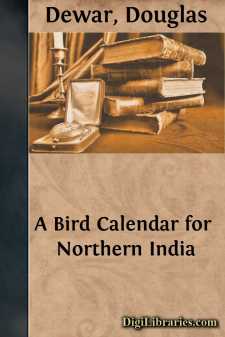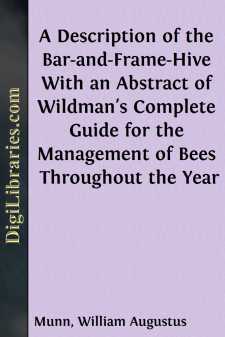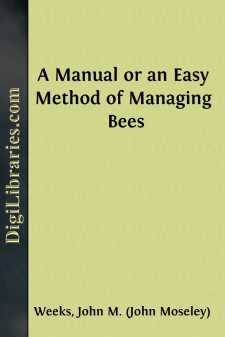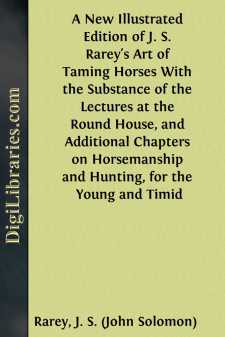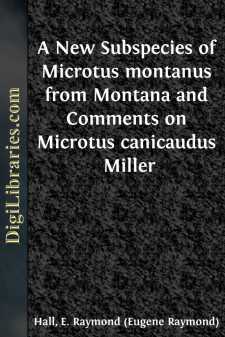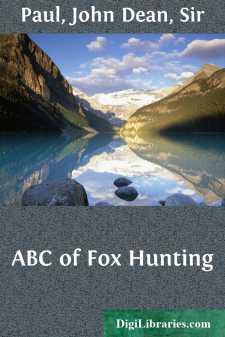Nature
Nature Books
Sort by:
by:
Douglas English
MUS RIDICULUS Mus ridiculus! The taunt had been flung at him by a stout field-vole, and, by reason of its novelty as well as of its intrinsic impertinence, had sunk deep into his memory. He had felt at the time that “Wee sleekit, cowrin’, tim’rous beastie” was but a poor rejoinder. But he knew no Latin and chose what was next in obscurity. Besides, he was a young mouse then, and breathless with...
more...
by:
Douglas Dewar
JANUARYMH Take nine-and-twenty sunny, bracing English May days, steal from March as many still, starry nights, to these add two rainy mornings and evenings, and the product will resemble a typical Indian January. This is the coolest month in the year, a month when the climate is invigorating and the sunshine temperate. But even in January the sun's rays have sufficient power to cause the...
more...
PREFACE Having been frequently requested to explain the use of the bar-and-frame-hive, in the management of bees, I have been induced to print the following pamphlet, to point out the advantages this new hive possesses over the common ones. I have added extracts from various authorities to show the importance of transporting bees for a change of pasturage, and thus prolonging the honey harvest....
more...
RULE I. ON THE CONSTRUCTION OF A BEE-HIVE. A bee-hive should be made of sound boards, free from shakes and cracks; it should also be planed smooth, inside and out, made in a workmanlike manner, and painted on its outside. REMARKS. That a bee-hive should be made perfect, so as to exclude light and air, is obvious from the fact, that the bees will finish what the workman has neglected, by plastering up...
more...
Mr. Rarey is a farmer from Ohio, in the United States. Five years ago he wrote the little book which forms the text of the following complete account of his system, with pictorial illustrations, which are essential for explaining the means he now employs for subduing the most refractory animals. Without these explanations, it would be extremely difficult for any one who had not enjoyed the advantage of...
more...
When Gerrit S. Miller, Jr., published his "Revision of the North American Bats of the Family Vespertilionidae" (N. Amer. Fauna, 13:1-140, 3 pls., 39 figs. in text, October 16, 1897), the red bat, Lasiurus borealis, was known from the southern half of Mexico but he did not know that the hoary bat, Lasiurus cinereus, also occurred there. Therefore, the name A[talapha]. mexicana Saussure (Revue et...
more...
IN 1949, for the Museum of Natural History of the University of Kansas, Mr. John A. White collected two specimens of the species Microtus montanus in the Bitterroot Valley of Montana, that did not fit the description of any named subspecies. These were laid aside until we could examine the additional specimens from Montana in the Biological Surveys collection in the United States National Museum, some...
more...
by:
Ticul Alvarez
In 1928 when Miller and Allen (Bull. U. S. Nat. Mus., 144) published their revisionary account of American bats of the genus Myotis, the black myotis, Myotis nigricans, was known no farther north than Chiapas and Campeche. Collections of mammals made in recent years for the Museum of Natural History of The University of Kansas include specimens of M. nigricans from eastern Mexico as far north as...
more...
by:
Ithamar Howell
Page 3 INTRODUCTION OFFICE OF THEBUREAU OF STATISTICS, AGRICULTURE AND IMMIGRATION,OLYMPIA, WASHINGTON, JUNE 1, 1909. This publication represents an effort to place before the general public, and particularly the visitors at the Alaska-Yukon-Pacific Exposition, a brief description of the principal resources and industries of the State of Washington. Its imperfections may be accounted for largely by...
more...
by:
John Dean Paul
A.was Andrews my man, who was A.1. his art in.B.my Buckskins & Boots, ready for me to start in.C.The Cover-Hack, giving my Lord's drag the go by.D.The Slap up Dog-Cart, which the driver you know by.E.was the Earth-stopper, early and willing.F.were the Fox-hounds, so far famed for killing.G.was the Gorse-Cover, certain for foxes.H.were the Hunters, just fresh from their boxes.I.was the...
more...



